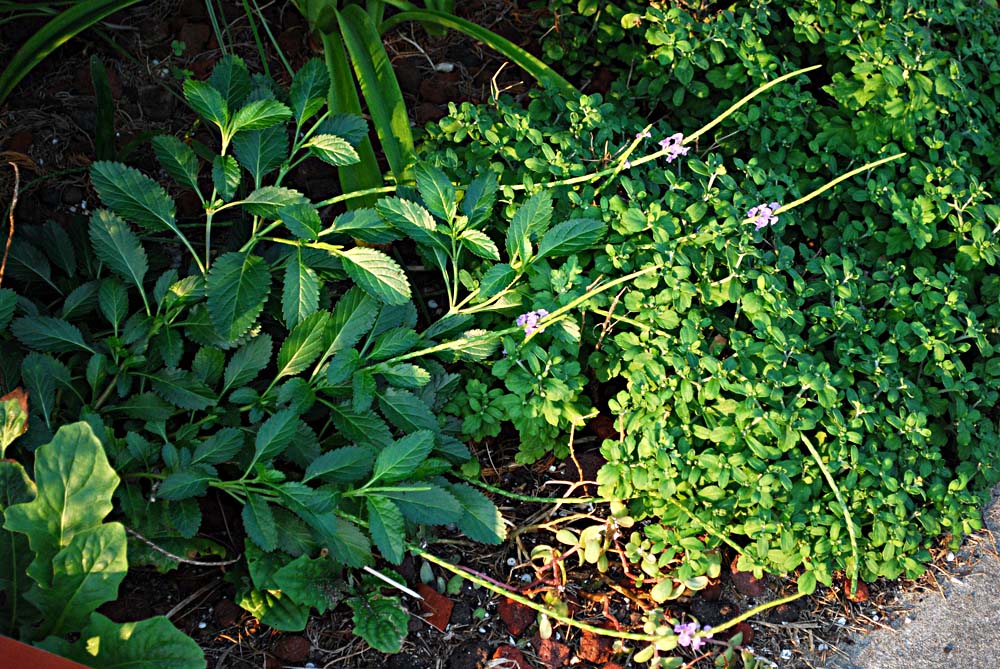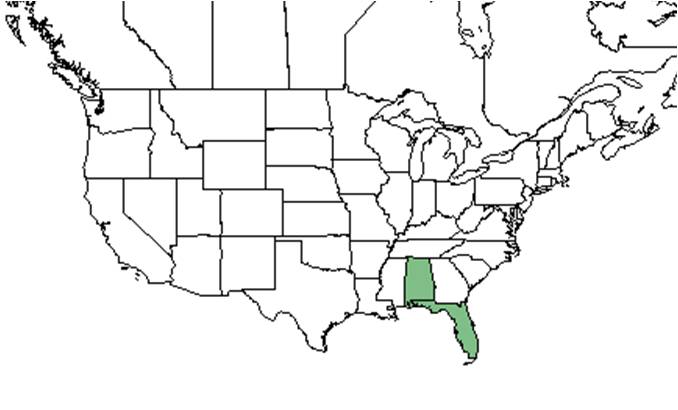Difference between revisions of "Stachytarpheta jamaicensis"
(→Ecology) |
HaleighJoM (talk | contribs) (→Pollination) |
||
| (One intermediate revision by the same user not shown) | |||
| Line 40: | Line 40: | ||
===Seed dispersal=== | ===Seed dispersal=== | ||
Seeds can be spread by animals, clothing, vehicles, and contaminated agricultural produce.<ref name="key"/> | Seeds can be spread by animals, clothing, vehicles, and contaminated agricultural produce.<ref name="key"/> | ||
| − | |||
<!--===Seed bank and germination===--> | <!--===Seed bank and germination===--> | ||
<!--===Fire ecology===--> <!--Fire tolerance, fire dependence, adaptive fire responses--> | <!--===Fire ecology===--> <!--Fire tolerance, fire dependence, adaptive fire responses--> | ||
| − | ===Pollination | + | |
| − | Bees such as ''Bombus pennsylvanicus'' (family Apidae) were observed visiting flowers of ''Stachytarpheta jamaicensis'' at the Archbold Biological Station:<ref name="Deyrup 2015">Deyrup, M.A. and N.D. 2015. Database of observations of Hymenoptera visitations to flowers of plants on Archbold Biological Station, Florida, USA.</ref> It is a food of death's head hawkmoths.<ref name="eol">[[http://eol.org/pages/579751/details]]Encyclopedia of Life. Accessed: March 17, 2016</ref> It is a larval host plant for the tropical buckeye caterpillar and a nectar source for Gulf fritillary and monarch butterflies.<ref name="lee"/> | + | ===Pollination=== |
| + | Bees such as ''Bombus pennsylvanicus'' (family Apidae) were observed visiting flowers of ''Stachytarpheta jamaicensis'' at the Archbold Biological Station:<ref name="Deyrup 2015">Deyrup, M.A. and N.D. 2015. Database of observations of Hymenoptera visitations to flowers of plants on Archbold Biological Station, Florida, USA.</ref> | ||
| + | |||
| + | ===Herbivory and toxicology===<!--Common herbivores, granivory, insect hosting, poisonous chemicals, allelopathy, etc--> | ||
| + | It is a food of death's head hawkmoths.<ref name="eol">[[http://eol.org/pages/579751/details]]Encyclopedia of Life. Accessed: March 17, 2016</ref> It is a larval host plant for the tropical buckeye caterpillar and a nectar source for Gulf fritillary and monarch butterflies.<ref name="lee"/> | ||
<!--===Diseases and parasites===--> | <!--===Diseases and parasites===--> | ||
Latest revision as of 18:07, 15 July 2022
| Stachytarpheta jamaicensis | |
|---|---|

| |
| Photo by Wayne Matchett, SpaceCoastWildflowers.com | |
| Scientific classification | |
| Kingdom: | Plantae |
| Division: | Magnoliophyta - Flowering plants |
| Class: | Magnoliopsida – Dicotyledons |
| Order: | Lamiales |
| Family: | Verbenaceae |
| Genus: | Stachytarpheta |
| Species: | S. jamaicensis |
| Binomial name | |
| Stachytarpheta jamaicensis (L.) Vahl | |

| |
| Natural range of Stachytarpheta jamaicensis from USDA NRCS Plants Database. | |
Common names: Light-blue snakeweed, Blue porterweed, Joee
Contents
Taxonomic notes
Synonym: Valerianoides jamaicensis (Linnaeus) Kuntze
Stachytarpheta comes from the Greek words: stachys meaning spike and tarphys meaning thick or dense, which both refer to the dense flower spike. The specific epithet refers to the species origin: Jamaica.[1]
Description
S. jamaicensis is a small, sprawling perennial shrub whose younger stems are green or purplish in color, glabrous, and square. The blue or pink flowers are borne terminally on long, stringy spikes at the end of the stems. Leaves are opposite, simple, serrated, and ovate. Fruits are inconspicuous.[2][3]
Distribution
This species is native to south Florida, the Caribbean, Bahamas, Bermuda, and Mexico.[4] It has become naturalized in Africa, Madagascar, tropical Asia, and northern and eastern Australia.[2]
Ecology
Habitat
S. jamaicensis grows on dunes, shell middens, pine rocklands, and disturbed sites.[4] It will grow in calcareous, acidic, alkaline, sandy, loamy and clay soils.[3][5]
Phenology
Numerous flowers are arranged on long, curved thick spikes.[2] Flowers all year, but less from December through February.[4]
Seed dispersal
Seeds can be spread by animals, clothing, vehicles, and contaminated agricultural produce.[2]
Pollination
Bees such as Bombus pennsylvanicus (family Apidae) were observed visiting flowers of Stachytarpheta jamaicensis at the Archbold Biological Station:[6]
Herbivory and toxicology
It is a food of death's head hawkmoths.[7] It is a larval host plant for the tropical buckeye caterpillar and a nectar source for Gulf fritillary and monarch butterflies.[4]
Conservation, cultivation, and restoration
Cultural use
Photo Gallery
Flowers of Stachytarpheta jamaicensis Photo by Wayne Matchett, SpaceCoastWildflowers.com
References and notes
- ↑ [[1]]Eat the Weeds. Accessed: March 17, 2016
- ↑ 2.0 2.1 2.2 2.3 [[2]]Weeds of Australia. Accessed: March 16, 2016
- ↑ 3.0 3.1 [[3]]University of Florida Extension. Accessed: March 17, 2016
- ↑ 4.0 4.1 4.2 4.3 [[4]]Lee County Extension. Accessed: March 16, 2016
- ↑ Florida State University Robert K. Godfrey Herbarium database. URL: http://herbarium.bio.fsu.edu. Last accessed: November 2015. Collectors: Robert K. Godfrey. States and Counties: Florida: Monroe. Compiled by Tall Timbers Research Station and Land Conservancy.
- ↑ Deyrup, M.A. and N.D. 2015. Database of observations of Hymenoptera visitations to flowers of plants on Archbold Biological Station, Florida, USA.
- ↑ [[5]]Encyclopedia of Life. Accessed: March 17, 2016
